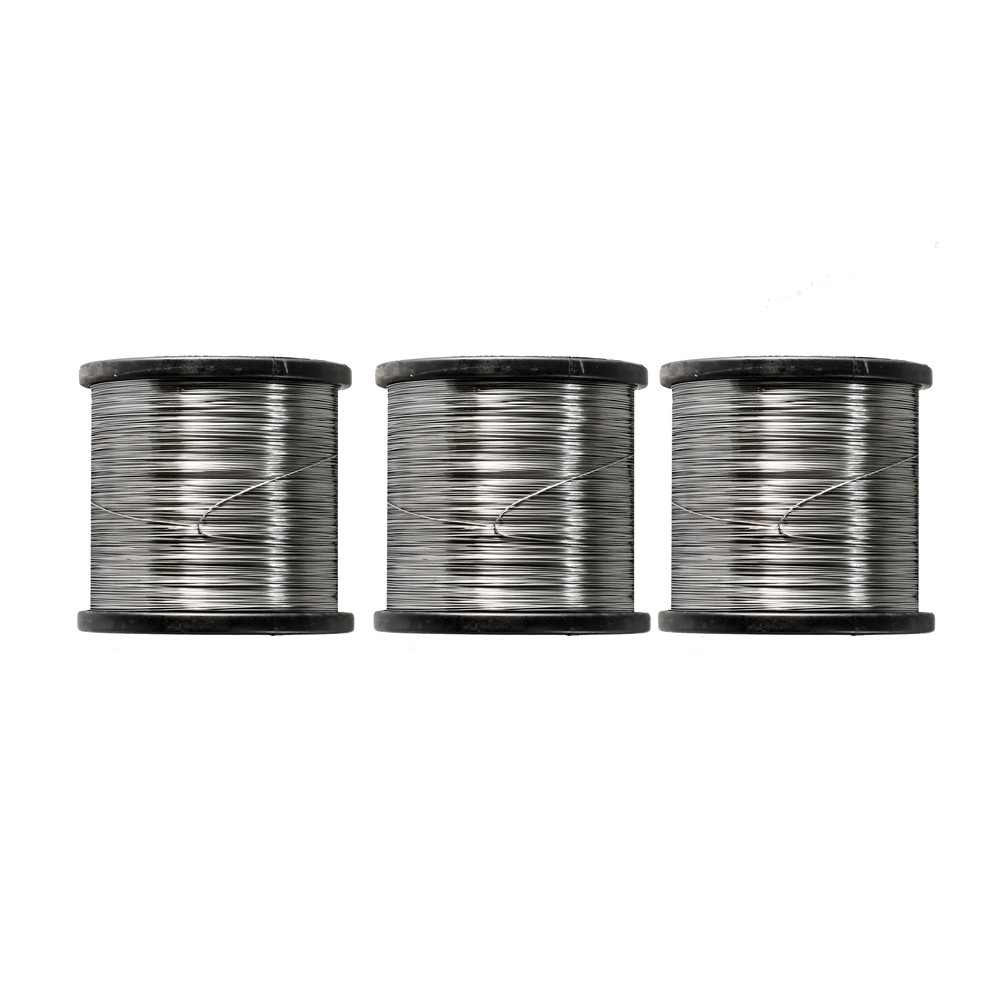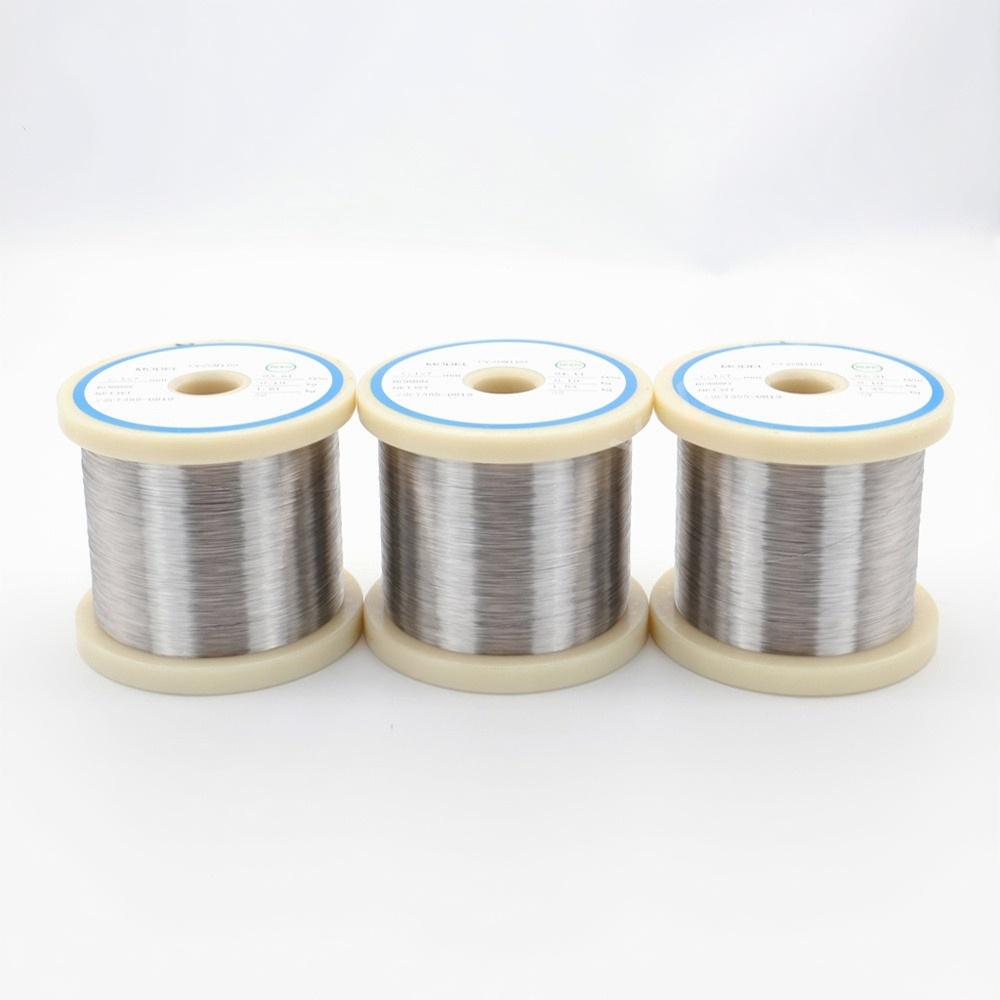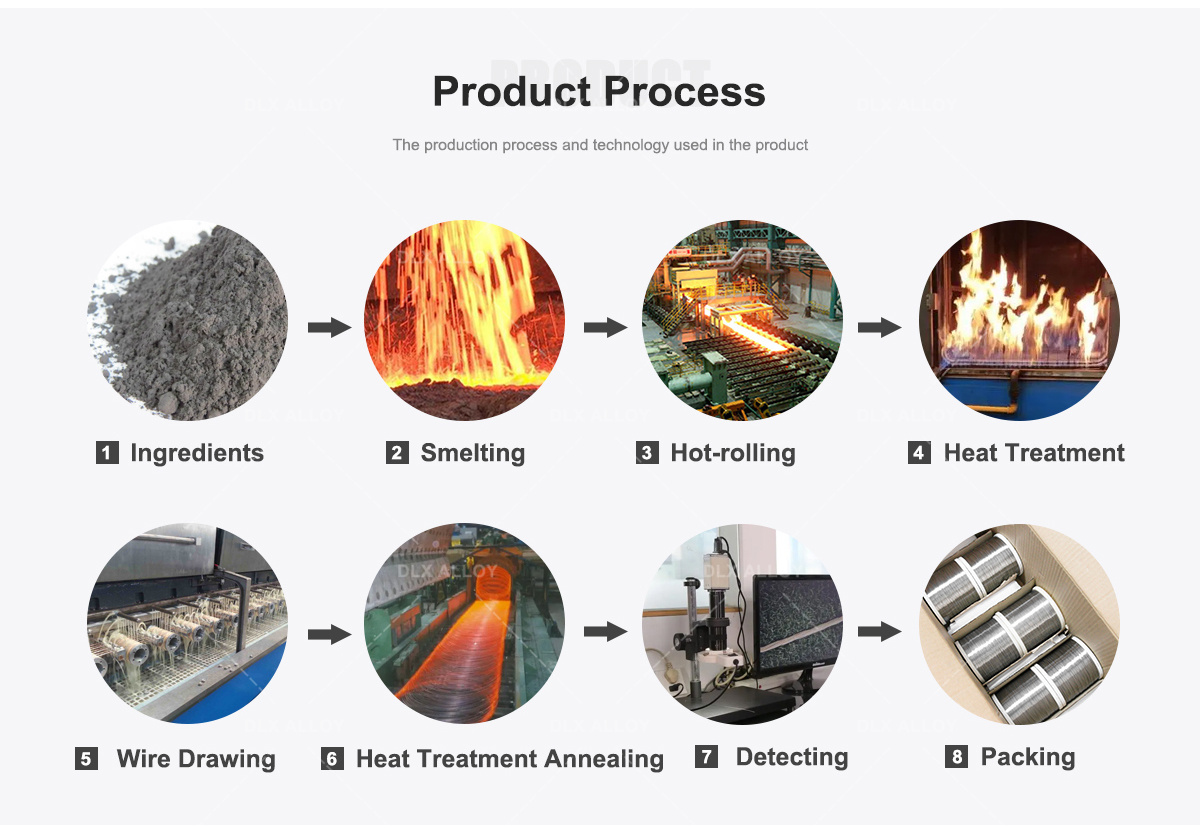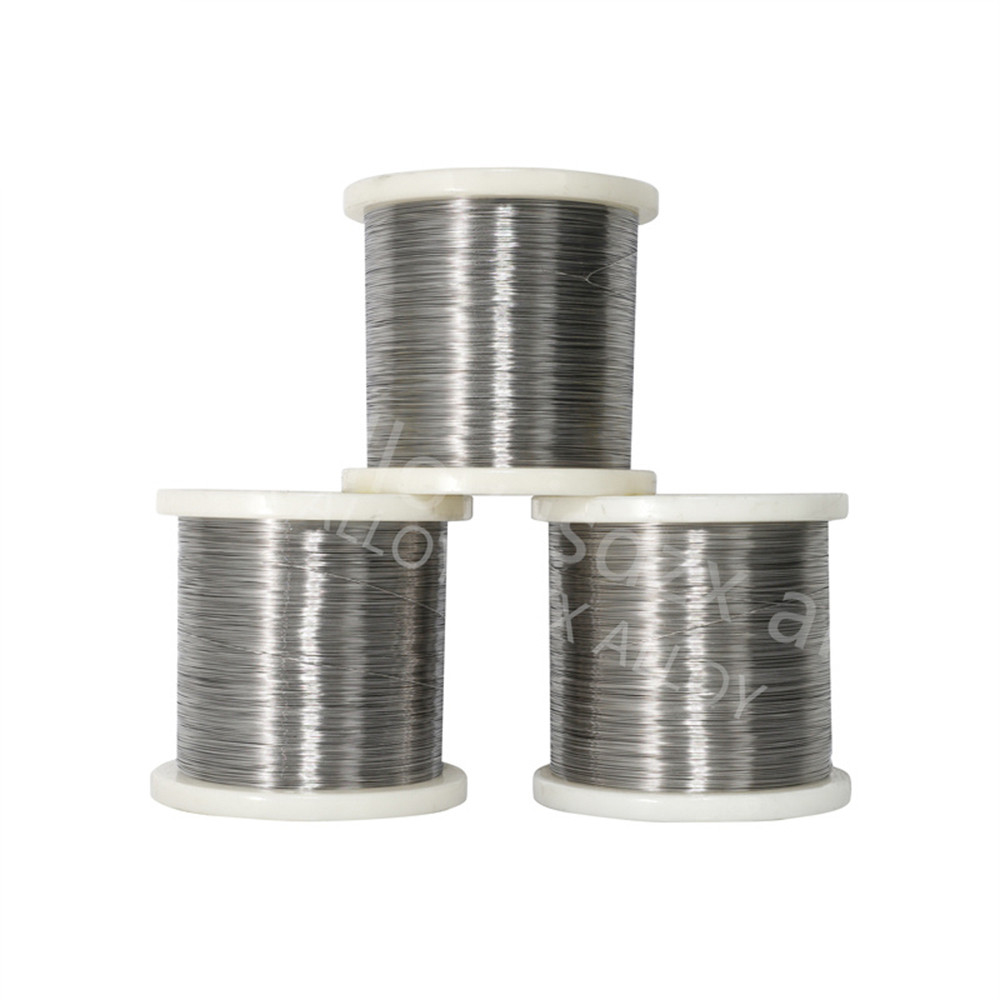 0
0
Products Description

Inconel alloy wire is a special alloy material with excellent properties. It is mainly composed of elements such as nickel, chromium and iron, and has high strength, excellent corrosion resistance and good high temperature stability.
Inconel alloy wire performs well in high temperature environments. It maintains strength and rigidity under extreme high temperature conditions and has good oxidation resistance, forming a dense oxide layer to protect the material. This makes Inconel alloy wire an ideal choice for high-temperature components and equipment in aerospace, petrochemicals, energy and heat treatment.
In addition, Inconel alloy wire also has excellent corrosion resistance. It can resist various corrosive media, including acid, alkaline and salt water. This makes it widely used in fields such as chemical industry, marine engineering and environmental treatment.
Inconel alloy wire also has excellent mechanical properties. It offers high strength, fatigue resistance and resistance to stress corrosion cracking. This makes it widely used in engineering structures and components that require high strength and reliability.
Overall, Inconel alloy wire has become one of the preferred materials for key components and equipment in many industrial fields due to its excellent performance in high temperatures and corrosive environments. Whether in the aerospace, chemical, petrochemical or energy fields, Inconel alloy wire exhibits excellent performance and provides reliable and durable solutions for engineering design.

Feature:

Corrosion resistance: Inconel alloy wire performs well in various corrosive media. It can resist corrosion from acidic, alkaline, salt water and oxidizing media, including sulfuric acid, hydrochloric acid, chloride and seawater. Therefore, it is often used in components such as pipelines, valves and reactors in chemical, petrochemical and offshore engineering fields.
High temperature performance: Inconel alloy wire has excellent high temperature stability and oxidation resistance. It can maintain high strength and hardness in extreme high temperature environments while forming a dense oxide protective film to prevent further oxidation and corrosion. This makes it ideal for high temperature applications such as aerospace, aircraft engines and heat treatment equipment.
Mechanical properties: Inconel alloy wire has excellent mechanical properties, including high strength, good fatigue resistance and resistance to stress corrosion cracking. It can withstand complex mechanical loads and extreme working conditions, maintaining structural integrity and reliability. This makes it widely used in high-strength structures and components in aerospace, automotive, chemical and energy fields.
Processability: Inconel alloy wire has good processability and can be formed and processed by a variety of processing methods. It can be cold processed, hot processed and welded to meet the needs of different shapes and sizes. This makes it flexible and malleable during the manufacturing process.
Application fields: Inconel alloy wire is widely used in aerospace, chemical industry, petrochemical industry, energy, marine engineering and automobile fields. It is used to manufacture gas turbine components, combustor components, high-temperature pipelines, chemical reactors, marine equipment, automobile exhaust systems, etc.
Physical property:

Density: ρ=8.28g/cm3
Melting temperature range: 1393-1427℃
Item | Inconel 600 | Inconel 601 | Inconel 617 | Inconel 625 | Inconel 690 | Inconel 718 | Inconel X750 | Inconel 825 |
C | ≤0.15 | ≤0.1 | 0.05-0.15 | ≤0.08 | ≤0.05 | ≤0.08 | ≤0.08 | ≤0.05 |
Mn | ≤1 | ≤1.5 | ≤0.5 | ≤0.35 | ≤0.5 | ≤0.35 | ≤1 | ≤1 |
Fe | 6-10 | rest | ≤3 | rest | 7-11 | rest | 5-9 | ≥22 |
P | ≤0.015 | ≤0.02 | ≤0.015 | -- | -- | -- | -- | -- |
S | ≤0.015 | ≤0.015 | ≤0.015 | ≤0.015 | ≤0.015 | ≤0.01 | ≤0.01 | ≤0.03 |
Si | ≤0.5 | ≤0.5 | ≤0.5 | ≤0.35 | ≤0.5 | ≤0.35 | ≤0.5 | ≤0.5 |
Cu | ≤0.5 | ≤1 | -- | ≤0.3 | ≤0.5 | ≤0.3 | ≤0.5 | 1.5-3 |
Ni | ≥72 | 58-63 | ≥44.5 | 50-55 | ≥58 | 50-55 | ≥70 | 38-46 |
Co | -- | -- | 10-15 | ≤10 | -- | ≤1 | ≤1 | -- |
Al | -- | 1-1.7 | 0.8-1.5 | ≤0.8 | -- | 0.2-0.8 | 0.4-1 | ≤0.2 |
Ti | -- | -- | ≤0.6 | ≤1.15 | -- | -- | 2.25-2.75 | 0.6-1.2 |
Cr | 14-17 | 21-25 | 20-24 | 17-21 | 27-31 | 17-21 | 14-17 | 19.5-23.5 |
Nb+Ta | -- | -- | -- | 4.75-5.5 | -- | 4.75-5.5 | 0.7-1.2 | -- |
Mo | -- | -- | 8-10 | 2.8-3.3 | -- | 2.8-3.3 | -- | 2.5-3.5 |
B | -- | -- | ≤0.006 | -- | -- | -- | -- | -- |

Shape | Size (mm) |
Wire | 0.5-7.50 |
Rod/Bar | 8.0-200 |
Strip | (0.5-2.5)*(5-180) |
Tube/Pipe | Customized |
Sheet/Plate | Customized |
For more details, pls directly contact us.
Physical property

The production process of Inconel alloy wire usually includes the following steps:
Raw material preparation: Select the appropriate Inconel alloy material, which is usually provided in the form of metal powder or blocks. According to needs, alloys with different compositions and properties can be selected.
Smelting: Add raw materials into a high-temperature smelting furnace and melt them through high-temperature heating. The molten alloy is maintained at a constant temperature to ensure uniformity of alloy composition.
Material processing: Molten alloys may require further processing, such as degassing, desulfurization, and decarburization, to reduce impurities and improve purity.
Continuous Casting: Casting molten alloy from a smelting furnace into continuous billets or rods. This can be done with a continuous casting machine, where the molten alloy is gradually formed into the desired shape by passing through devices such as cooling plates and cooling wheels.
Heat treatment: Continuously cast billets or bars usually require heat treatment to adjust their structure and properties. The heat treatment process may include heating, holding, and cooling steps to achieve the desired mechanical properties and microstructure of the alloy.
Hot rolling or cold drawing: The heat-treated billet or bar can be shaped and sized modified through processing processes such as hot rolling or cold drawing. Hot rolling is usually used for larger sizes, while cold drawing is suitable for smaller diameter filaments.
Cleaning and inspection: The formed Inconel alloy wire needs to be cleaned and inspected to remove surface contaminants and impurities and ensure that the quality and performance of the product meet requirements. Inspections may include chemical composition analysis, mechanical property testing and surface quality inspection.
Packaging and Storage: After completion of inspection, Inconel alloy wire is usually packaged, labeled and stored according to prescribed standards for transportation and use.


Related information

Alloy composition design: Inconel alloys are a series of nickel-based alloys whose compositions can be designed and adjusted according to different application requirements. Understanding the impact of different elements on alloy properties, as well as the principles of alloy composition design, is critical to developing appropriate formulations and meeting specific needs.
Heat treatment technology: Heat treatment is one of the key steps to adjust the alloy structure and properties. Understanding different heat treatment processes, such as solution treatment, aging treatment, and quenching treatment, and their impact on alloy properties can help optimize the production process and achieve the desired performance goals.
Metal processing technology: The production of Inconel alloy wire usually involves metal processing technology, such as hot rolling, cold drawing, steel wire drawing, welding, etc. Understanding the principles, equipment and parameter settings of these processing technologies is very important to ensure product dimensional accuracy, surface quality and performance stability.
Inspection and Quality Control: For the production of Inconel alloy wire, quality control is crucial. Understanding alloy wire inspection methods, such as chemical composition analysis, tensile testing, hardness testing, metallographic microscope observation, etc., can help ensure that products meet specification requirements, and quality problems can be discovered and solved in a timely manner.
Safety and environmental protection: During the production process, safety and environmental protection issues should be paid attention to. Understand relevant regulations and standards, take appropriate safety measures to ensure workplace safety, and properly dispose of waste and emissions to reduce environmental impact.
Equipment and process improvement: Understanding modern production equipment and emerging process improvement technologies, such as automated control systems, advanced material analysis instruments and simulation software, can help improve production efficiency, quality and sustainability.

E-mail: Info@hulkalloy.com
Mobile: 0086 13852926463
Tel: 0086 13852926463
Whatapps: 0086 13852926463
Add: Renli Village, Fangxian Town, Danyang City, Jiangsu Province, China